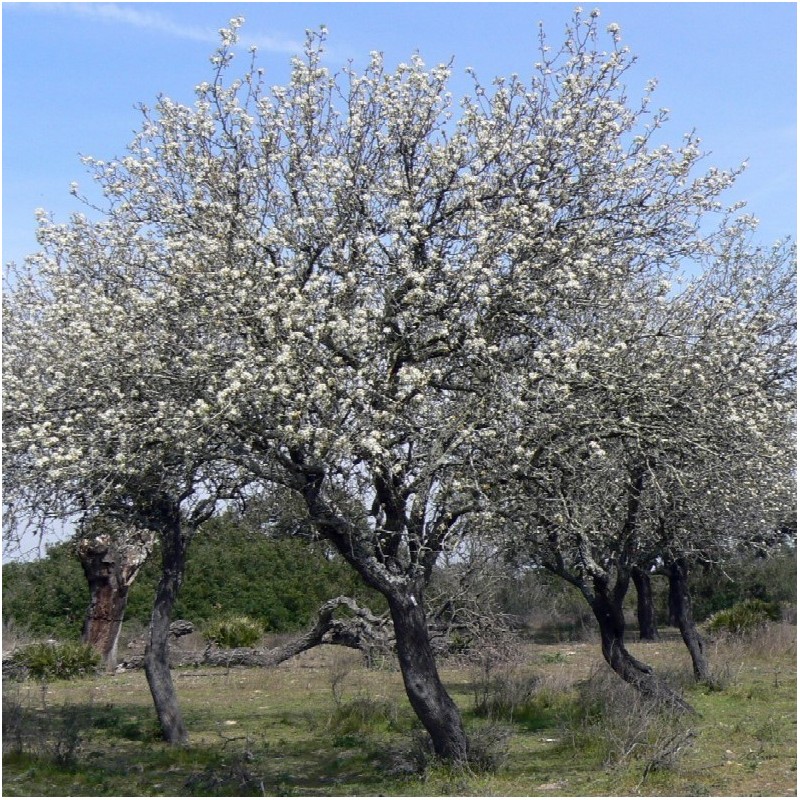Pyrus bourgaeana, or the Iberian pear, is a species of pear in the rose family Rosaceae, and a close relative of the common pear (Pyrus communis). This small tree (typically 3–6 m high) is widely distributed across the southern Iberian Peninsula and northern Morocco, where it coexists with four other Pyrus species: common pear, Plymouth pear (P. cordata), almond-leaved pear (P. spinosa), and snow pear (P. nivalis). Characteristics to discriminate these species are the width of fruit peduncle, petal size, leaf width and petiole length.

